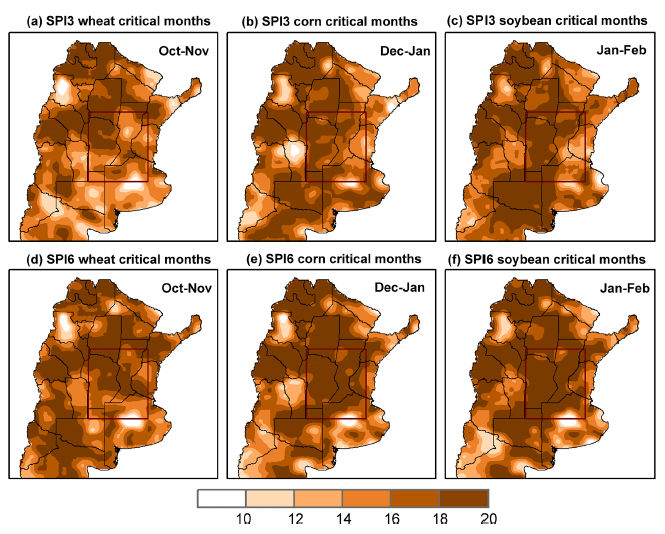CISESS Deputy Director E. Hugo Berbery has a new article published on May 17th in the journal Hydrology and Earth System Sciences titled “Characteristics of droughts in Argentina’s Core Crop Region”.
The paper describes a study that advances the understanding and impacts of dry episodes on wheat, corn, and soybean yields over Argentina’s core crop region, a critical contribution to the country’s gross domestic product. The researchers looked at the droughts’ properties, including their magnitude, frequency at different timescales, duration, and severity over 40 years of data on precipitation and soil moisture data. They found that, regardless of the duration, droughts have larger impacts during the crops’ critical growth period. They suggest that shorter scale drought indicators during sensitive periods are more appropriate for predicting crop yield losses than the longer-scale indicators. This new approach can be helpful for regional decision-making systems that support planning by water managers and agricultural stakeholders.

E. Hugo Berbery is a Research Professor at ESSIC and Deputy Director of the Cooperative Institute for Satellite Earth System Studies (ESSIC/CISESS). He is also affiliated with AOSC, where as an Adjunct Member of the Graduate Faculty, he advises graduate students and mentors undergraduate students. He has research interests in large scale dynamics, regional hydroclimate variability, and land surface-atmosphere interactions. He uses regional models and diagnostic approaches to investigate the regional mechanisms of the American monsoon systems, and the effects of land-cover changes and land surface-atmosphere feedbacks on the hydroclimate and extremes of the Americas. Dr. Berbery’s research interests include the dynamical basis of intraseasonal teleconnections, the mechanics of the interaction between tropical heating and subtropical and extratropical circulations, storm tracks low frequency modes of variability and droughts.
To access the article, click here: “Characteristics of droughts in Argentina’s Core Crop Region”.






